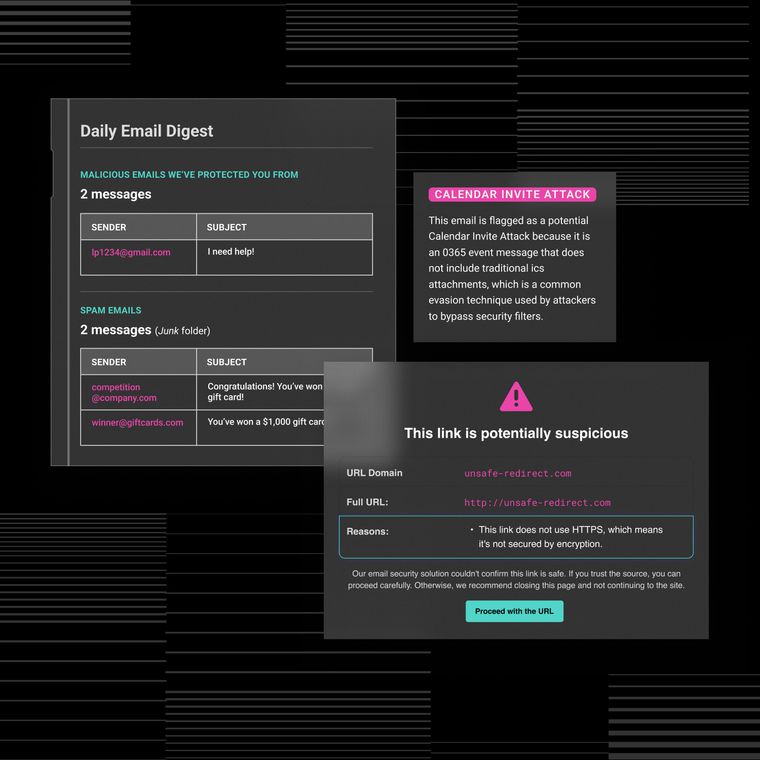10 Tips to Deliver a SOC Report Your CEO Will Actually Read
Write SOC reports that inform and influence leadership with these actionable tips tailored for executive engagement.
July 15, 2025
Most CEOs skim past a SOC report because pages of control descriptions and testing matrices bury the one thing they need: how the findings affect revenue, reputation, and growth. When that happens, you miss the chance to tackle issues that could stall a product launch, inflate remediation costs, or erode customer trust.
Over the next ten tips, you'll learn how to convert dense audit language into concise, executive-ready insights—starting with a one-page summary, translating technical gaps into business risk, attaching concrete dollar figures, and spotlighting high-ROI actions. By the end, your report will speak the board's language and drive decisions instead of gathering dust.
1. Lead With a One-Page Executive Summary
A single, CEO-ready page that clearly communicates how this SOC period affects profit, reputation, and growth drives executive engagement and action. Place the essentials in the top half: the report period, the service auditor's opinion, and a traffic-light headline risk rating so your CEO can gauge exposure at a glance.
Insert a concise pull-quote—something like "Controls were designed and operated effectively throughout the review period"—to satisfy auditors while justifying brevity. Beneath it, use bolded keywords, short sentences, and a tight bullet list of the metrics leaders care about:
Control pass rate
Number of critical exceptions
Estimated revenue at risk
Keep paragraphs under three lines and use whitespace; scannable layouts cut reading time and prevent cognitive overload. CEOs consistently struggle with the technical complexity in SOC reports, so plain language and visual cues are non-negotiable.
2. Translate Technical Findings Into Business-Risk Statements
Rewrite every control exception as a clear business consequence your CEO cannot ignore. When you translate an "unencrypted backup" into "potential $4.2 million in lost revenue if a ransomware outage stalls order fulfillment," the risk suddenly lives in the balance sheet, not the server room.
Start by mapping each finding to the process or asset it protects—customer data, uptime promise, or regulatory license. Run it through proven risk assessment methodologies to score likelihood and impact. Replace jargon with language tied to strategic goals: a missing MFA control threatens "customer trust during market expansion," not "C-004 control failure." If a term like "TSC" must remain, define it in one line.
Validate the narrative with cross-functional reviews. Collaborative risk translation workshops ensure finance, legal, and operations agree on the dollar figures and brand stakes. The result is a report that steers decisions instead of stalling them.
3. Quantify Financial & Operational Impact
Every SOC finding needs a credible dollar figure so your CEO can evaluate security risks like any other business decision. Map each control exception to the business process it threatens, then apply a proven quantitative framework such as the FAIR-inspired models. Build best- and worst-case ranges for each risk using internal revenue data paired with industry studies to estimate lost sales per hour of outage, likely GDPR or SOX penalties, and remediation costs.
Summarize each risk in a single line—"Unencrypted backups could cost $4.2 M to $9.8 M"—so executives immediately see trade-offs and can prioritize spend. Hard numbers, not adjectives, transform security findings into boardroom language that drives immediate action.
4. Highlight the Top 3 Actionable Recommendations
You capture executive attention by surfacing only three high-ROI fixes, each framed so your CEO can approve or reject in seconds. Many CEOs abandon SOC reports because they lack clear calls to action. Limiting the list to three items forces rigor: if a task is not critical enough to make the cut, it should not compete for scarce leadership mindshare.
For each recommendation, present a one-line outcome statement followed by three decision levers: owner, cost band, and time to remediate. A concise table or boxed callout works well:
Encrypt all customer backups within 30 days – Owner: CIO – Cost: $$ – Benefit: significantly reduces risk of breach-related fines
Automate quarterly access reviews by Q3 – Owner: GRC lead – Cost: $$ – Benefit: closes SOX material-weakness gap
Implement dual-data-center failover before holiday peak – Owner: Ops VP – Cost: $$$ – Benefit: protects projected $18M seasonal revenue
Outcome-oriented phrasing ("eliminates fines" rather than "enable encryption") ties each fix to strategic goals, reducing the cognitive load your CEO faces when converting audit language into business action.
5. Map SOC Controls to Strategic Objectives
Executives understand business impact when SOC controls connect directly to measurable objectives. List the five trust service categories—security, availability, processing integrity, confidentiality, and privacy—then pair each with the specific business goal it protects. For example:
Availability: Sustains 99.9% storefront uptime, ensuring less than 45 minutes of monthly downtime for your e-commerce platform.
Security: Protects customer data integrity, maintaining trust during market expansion.
Processing Integrity: Guarantees accurate financial transactions, supporting reliable revenue recognition.
Confidentiality: Safeguards proprietary information, preserving competitive advantage.
Privacy: Ensures GDPR/CCPA compliance, avoiding regulatory penalties that impact margins.
Format these connections with clear, scannable layouts using bold text for categories and concise descriptions of their business impact. Add color-coding or visual indicators to highlight risk levels or maturity scores. This explicit mapping accelerates leadership buy-in and resource allocation decisions that matter to your bottom line.
6. Use Plain Language and Ban Jargon
Plain language transforms technical SOC findings into CEO-readable insights that drive business decisions. Strip away every acronym and audit buzzword that doesn't speak to revenue, reputation, or risk.
Translate technical shorthand into words that matter to the business:
"PII encryption failure" → "Customer data at risk of theft"
"Ineffective IAM controls" → "Unauthorized users could change payroll"
"SOC 2 TSC gap: Availability" → "Site could go offline during peak sales"
For essential terms that must stay, add a single-sentence glossary: "MTTR: hours from alert to fix." Place it in the margin or at the bottom so readers never leave the narrative. Before sharing, run the draft through a readability checker and aim for a Grade 8–10 score. Anything higher signals lingering jargon that will cause executives to tune out.
7. Visualize Data With CEO-Friendly Graphics
Clear, minimalist visuals turn dense SOC metrics into sixty-second executive decisions. Start with a stacked bar chart showing control coverage across the five Trust Services Criteria—one glance reveals gaps and over-investments. Translate risk ratings into a stop-light heatmap with red, yellow, and green indicators so priority issues stand out during board meetings.
Pair each graphic with a single-sentence caption stating business impact, not technical detail. Follow executive dashboard principles: limit colors to your corporate palette and reserve bright red for only the most critical cells. This approach aligns with data-driven decisions in SOC operations.
When trends matter, overlay a simple line on quarterly exception counts—CEOs instantly grasp trajectory. For deeper context, embed interactive graph visualizations that highlight lateral movement during major incidents, but gate them behind drill-downs to preserve the summary view. Consistency, brevity, and purposeful color keep every figure executive-ready.
8. Show Trend Lines and Peer Benchmarks
Trend lines and peer benchmarks give executives the context they need to understand your security posture's trajectory and competitive position. Plot year-over-year exception counts in a simple line graph—upward slopes signal deterioration, downward trends prove improvement. Export three audit cycles onto a single axis and annotate sharp drops with the specific control changes that drove results.
Frame your performance against credible industry averages to show whether you're ahead of, on par with, or lagging peers. Source sector benchmarks from industry-standard frameworks such as MITRE ATT&CK or research reports by established organizations like Gartner or SANS Institute, rather than annual assurance digests or informal summaries of SOC strategies.
Apply consistent scaling, cite sources beneath graphics, and explain material variances in one-sentence captions. This combination allows executives to gauge trajectory and competitiveness instantly—the precise context needed for remediation budget decisions.
9. Close With a Clear Remediation Timeline & Ownership Matrix
Finish the report with a streamlined timeline and ownership matrix that gives you, your CEO, and every control owner exact clarity on who acts, when, and at what cost.
Build a single-page table listing each finding's remediation task, the accountable executive, a realistic deadline, the estimated spend, and a link to supporting evidence in your repository. Flag the one or two fixes that demand CEO sponsorship—visible bolding keeps leadership attention on mission-critical items.
Populate the schedule only after ranking issues by business risk, following established prioritization frameworks. Update the matrix in the same repository that stores testing evidence. This keeps auditors, security teams, and executives working from one source of truth while providing an audit-ready record of progress.
10. Automate Evidence Collection & Reporting for Ongoing Visibility
Automation transforms SOC reporting from reactive documentation into proactive business intelligence that executives can access instantly.
Integrating SOAR platforms with your ticketing, IAM, and logging systems creates a unified evidence repository where control tests are automatically ingested and tagged. Scripted playbooks handle routine access reviews, flagging exceptions before auditors find them. This approach shifts your team's focus from hunting for evidence to analyzing security posture insights, while capturing compliance artifacts in real time.
Real-time dashboards display control coverage and remediation progress without manual formatting. Many teams implement weekly automated executive summaries that email metrics directly to leadership, eliminating slide deck preparation while ensuring consistent updates on control effectiveness.
How Abnormal Enhances Your SOC Reporting
Abnormal AI ingests evidence from email, cloud, and identity systems, tags it to the Trust Services Criteria, and assembles the one-page executive summary—complete with stop-light risk ratings—without you touching a spreadsheet.
Because every control test is mapped to business outcomes in the platform, technical exceptions instantly become revenue, compliance, or reputation metrics your CEO can grasp at a glance. Live dashboards track remediation owners and timelines.
Customers report cutting report preparation time by up to 75%, freeing you to focus on strategy instead of copy-paste drudgery. If you're ready to move SOC reporting from annual fire drill to continuous business insight, request a personalized demo of Abnormal AI and see how streamlined executive communication can be.
Related Posts
Get the Latest Email Security Insights
Subscribe to our newsletter to receive updates on the latest attacks and new trends in the email threat landscape.


